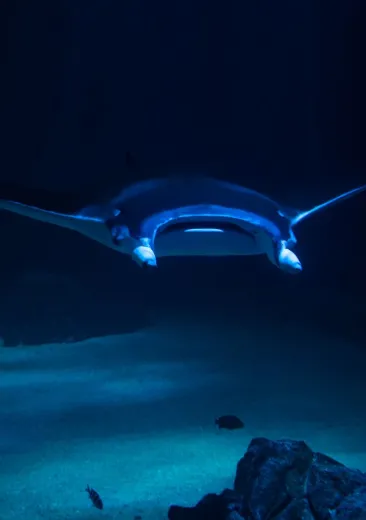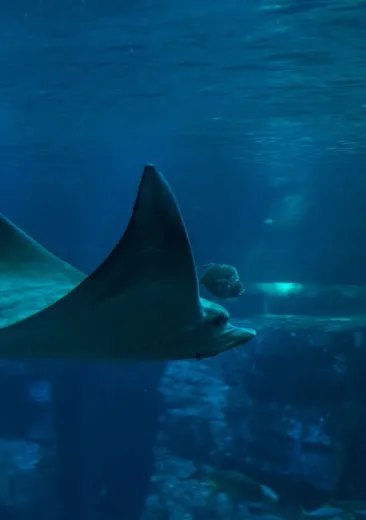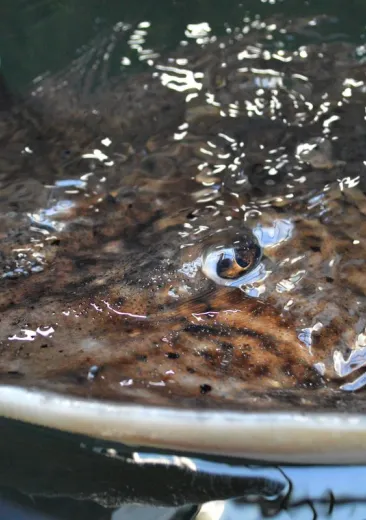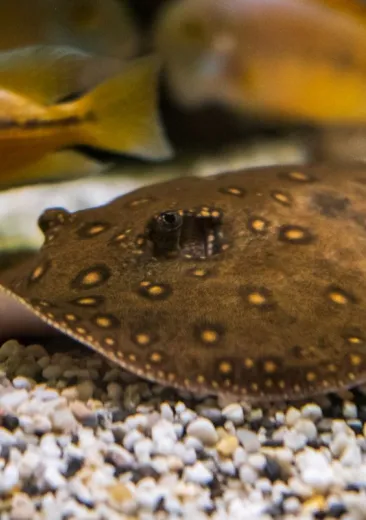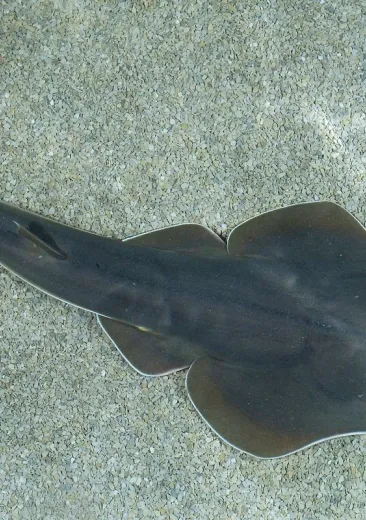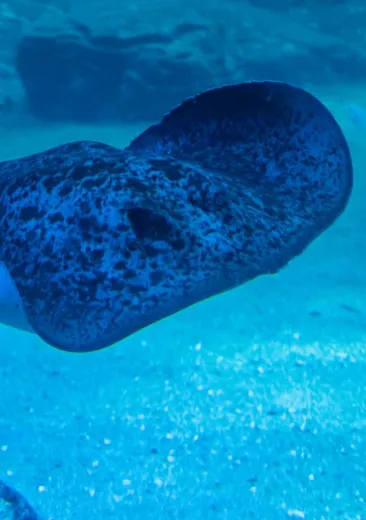A little undulate ray was born on the 28th of March 2023 after incubating for around 4 months in our aquariological reserves, as part of a European conservation programme.
Birth of undulate rays at Nausicaá
Little undulate rays, also known as undulate skates, have been born at Nausicaá.
Premières naissances
The spawners previously present in the touch tank have returned to the reserves to reproduce. In this way, the eggs laid can be easily recovered and counted by the keepers, and this also prevents predation in the tank.
Furthermore, the keepers will be able to precisely determine the date when the eggs are laid and calculate the incubation period, which can vary depending on the water temperature.
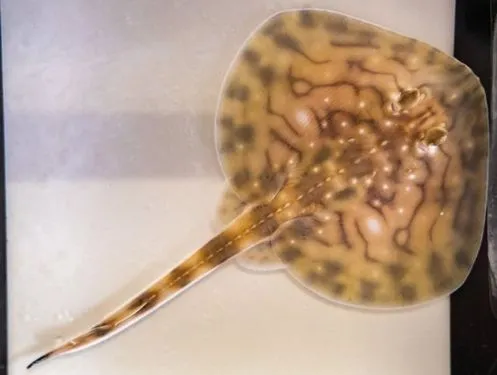
One male and three females have produced eggs that will hatch over several weeks. Some eggs have been transferred to other partner aquariums.
Rays reproduce during the autumn and winter months so that baby rays are born at a time when food is more abundant.
The undulate ray is a species that can be found in the English Channel, from the tip of Cherbourg all the way to Menton in the Mediterranean, including the Atlantic Ocean.
The undulate ray, an endangered species
The undulate ray (Raja undulata), also known as the undulate skate, is on the IUCN Red List of Threatened Species. In Europe, its status is "NT - Near Threatened". Its population is declining in areas where it was reputed to be locally abundant. Overfishing is the main reason for this. Like other rays, the undulate ray has characteristics that adversely affect its survival, namely its slow sexual maturity at the age of 3 to 4 years and low fecundity, which have an impact on population growth.
Since 2023, the undulate ray has been the focus of an EEP, a species conservation programme defined within EAZA, the European Association of Zoos and Aquariums, in which Nausicaá is involved. Aquariums that are partners in the programme share information about the animals in their facilities and, if there are any births, the young rays go to other facilities.
A chance to observe
The birth of these rays will be monitored and documented in order to gather information on the species. This work will be shared with the Trégastel aquarium, from where the spawners originate, and with the two aquariums that have recovered eggs.
As soon as they are born, the first data recorded are measurements of the total length of the ray, from the tip of the nose to the pelvic fins, and the wingspan. These measurements are used as points of comparison depending on the age of the parents, and perhaps also on different populations depending on the geographical origins of the spawners.
The keepers monitor and watch over the growth of these baby rays every day; their feeding is closely monitored and particular care is taken with their diet to ensure that they grow up in the best possible conditions.
The conservation programmes at Nausicaá
Nausicaá is a unique biodiversity conservatory where several hundred offspring are born every year. Furthermore, Nausicaá participates in European conservation programmes to save endangered species.
